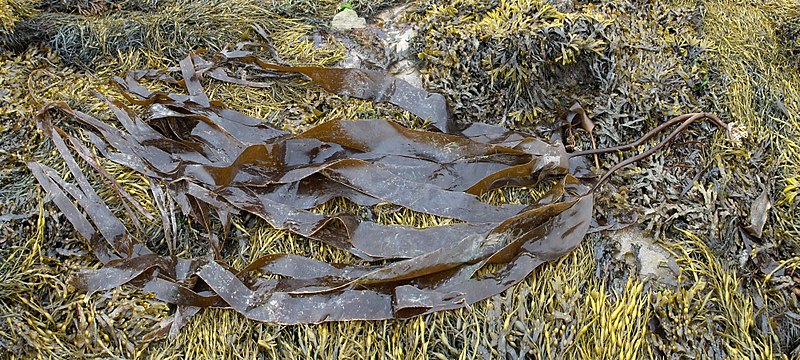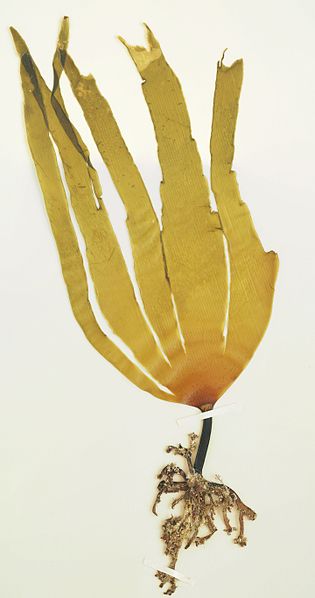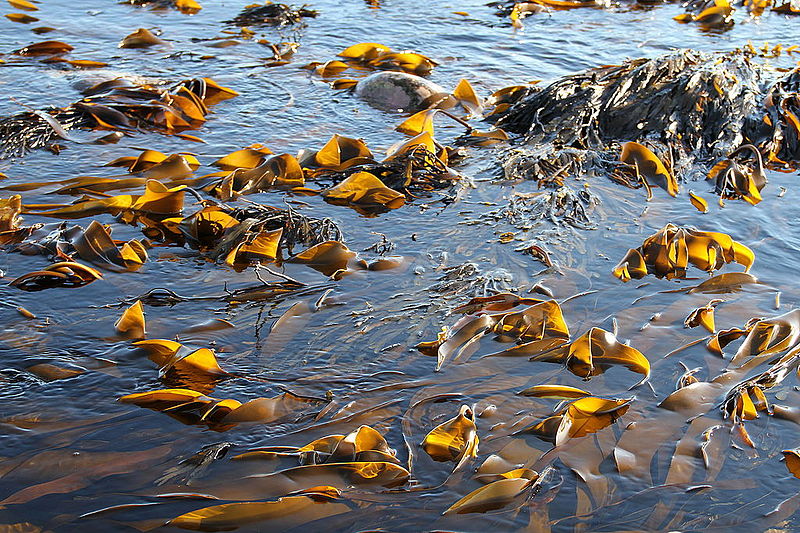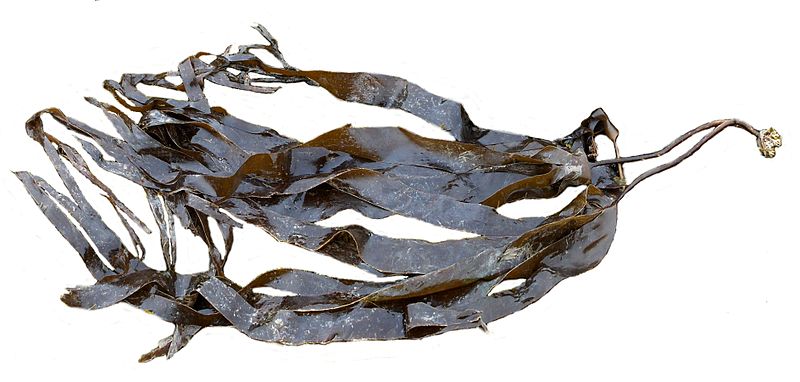❀ Common names: Kelp, brown algae, tangles
❀ Aphia ID#: 144199

Introduction to Laminaria
What is Laminaria?
Laminaria is a genus of brown algae, often known as “kelp” they can create “forests” in subtidal areas down to depths of approximately 20-30 m. Kelp is a diverse morphological group, with approximately 30 species of Laminaria that can be found throughout the Atlantic and Pacific oceans (Smale et al. 2013). Kelp forests are complex three-dimensional habitats, that contain an understory of various algae, that can provide habitat for numerous marine organisms including fish and invertebrates (Schaal et al. 2009). Kelp forests may be dominated by one species or composed of several species, for example, a hypothetical kelp forest could be made of several species from more than one family (Laminariales and Fucales) or by just the species Laminaria digitata. Laminaria are relatively short lived perennial (annually occurring) seaweeds. Their abundance is determined by factors including wave exposure, light levels, temperature levels, sedimentation, and depth (Smale et al. 2013).
How to identify it/ species description
Components of Laminaria include: the holdfast which anchors Laminaria to a typically hard bottom substrate, a stipe which is the stem-like structure extending from the holdfast, and the lamina/frond, a flat ribbon-like blade(s). Depending on the species of Laminaria there may be one or several lamina present, the stipe may be more or less rigid, and the stipe may be longer or shorter (Smale et al. 2013). The bryozoan Membranipora membranacea can be found on Laminaria (Lambert et al. 1992), and some species like Laminaria hyperborea host diverse epiphytic growth on their stipe. Growth rates and lengths vary greatly depending on the species, temperature, light availability, and nutrient availability. The optimum temperature for Laminaria growth is between 8 and 16°C. According to Liebig’s law of the minimum even if all nutrients are readily and fully available besides one that one nutrient will limit growth. Algae requires elements N, P, Fe, Cu, Zn, Mn, and C for growth (Lobban and Harrison 1994).
Role in the ecosystem
Laminaria are primary producers meaning they provide energy for all trophic levels (Smale et al. 2013). Some grazers avoid Laminaria because of its low nutritional value and deterrent secondary metabolites, but gastropods, limpets, and urchins can still be found feeding on it (Norderhaug et al. 2003). Because of their varying morphology different species of Laminaria support different assemblages of organisms within the kelp forest. Kelp forests can serve as nursery grounds for fish and invertebrates, and feeding grounds for various fish species (Smale et al. 2013).
Kelp forests can alter light, sedimentation rates, and water flow while increasing biomass and aiding in nutrient flow in the ecosystem. Holdfasts have the ability to entrain sediments. As kelp dies and decays it increases nitrogen in the detritus and organisms such as bivalves consume it (Schaal et al. 2009). Over 80% of kelp biomass goes into the carbon cycle, greatly influencing carbon fluxes in areas with kelp forests (Smale et al 2013).
Distribution Map
More Images
1st image: Luis Fernández García [CC BY-SA 4.0 (https://creativecommons.org/licenses/by-sa/4.0)]
2nd image: Bjoertvedt [CC BY-SA 4.0 (https://creativecommons.org/licenses/by-sa/4.0)]
3rd image: Laminaria.jpg: Stemonitisderivative work: Thiotrix [CC BY 2.5 (https://creativecommons.org/licenses/by/2.5)]



